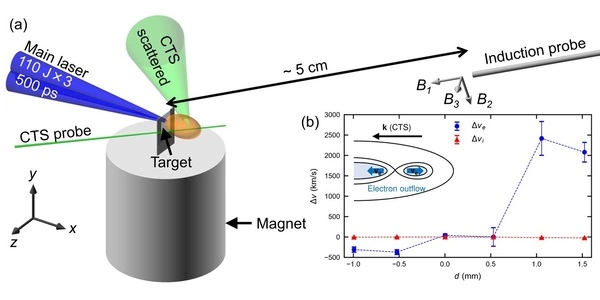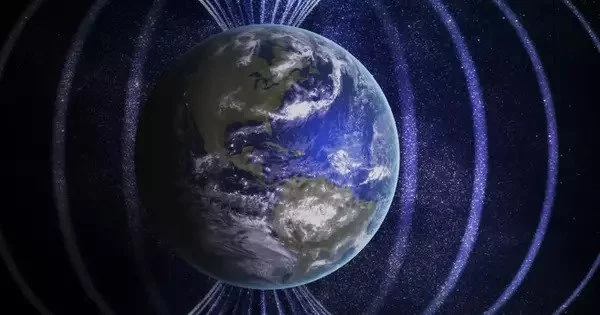Lasers are useful for a variety of applications. They made CDs work (when they were still a thing). They also keep cats entertained for hours (and their humans). According to new research from Osaka University, they can also create magnetic conditions similar to the surface of the Sun in a lab. And this could help a wide range of other scientific disciplines, from solar astronomy to fusion.
A research team observed magnetic reconnection caused by electron dynamics in laser-produced plasmas and measured pure electron outflows. Their findings will be applied not only to space and astrophysical plasmas, but also to magnetic propulsion and fusion plasmas.
The experiment made use of a high-power laser known as Gekko XII at Osaka University’s Institute of Laser Engineering. This laser, which was originally intended for fusion experiments, is powerful enough to vaporize a piece of plastic when focused on it. Or, more precisely, it is powerful enough to convert it to plasma.
Magnetic reconnections in laser-produced plasmas have been investigated in order to better understand microscopic electron dynamics, which are relevant to space and astrophysical phenomena. Researchers from Osaka University, in collaboration with researchers from the National Institute for Fusion Science and other universities, have reported direct measurements of pure electron outflows relevant to magnetic reconnection using a high-power laser, Gekko XII, at Osaka University’s Institute of Laser Engineering. Springer Nature Scientific Reports published their findings.
In space plasmas, the key players sometimes hide in a small scale. It is very difficult to see their actions in large-scale space phenomena, even via cutting-edge numerical simulations. Now laser experiments can arrange a new stage to shed light on their actions. The results will bridge various observations and simulations in macroscopic and microscopic points of view.
Toseo Moritaka
Magnetic reconnection is a key process in many space and astrophysical phenomena, including solar flares and magnetic substorms, in which magnetic energy is released as plasma energy. It is well understood that electron dynamics play critical roles in the magnetic reconnection triggering mechanism. However, observing the tiny electron scale phenomena in the vast universe has been extremely difficult.
As a result, the researchers were able to create situation-only electrons that were directly coupled with a magnetic field in laser-produced plasmas. Laboratory astrophysics provides access to the miniature universe.
“In space plasmas, the key players sometimes hide in the small scale. It is very difficult to see their actions in large-scale space phenomena, even via cutting-edge numerical simulations,” study author Toseo Moritaka explains. “Now laser experiments can arrange a new stage to shed light on their actions. The results will bridge various observations and simulations in macroscopic and microscopic points of view.”

By using collective Thomson scattering measurements, the pure electron outflow associated with the electron-scale magnetic reconnection has been measured in laser produced plasmas for the first time.
“The findings of this study are applicable not only to space and astrophysical plasmas, but also to magnetic propulsion of spacecrafts and fusion plasmas,” explains study lead author Yasuhiro Kuramitsu.
“Macroscopic phenomena such as magnetic reconnections and collisionless shocks are governed by microscopic electron dynamics. This is a unique and universal property of plasma that is not found in other gases or liquids. This can now be addressed in laboratories through direct local measurements of the plasma and magnetic field. We will model long-standing open problems in the universe in laboratories. Knowing the nature of plasmas may lead to the discovery of, say, fusion plasma.”
This phenomenon is thought to be important in other, much larger astrophysical phenomena like solar flares and magnetic storms on the Sun’s surface. The electron dynamics of the area create what is known as a magnetic reconnection in these larger-scale instances, where the magnetic field of a feature reconnects with the base magnetic connection of the body from which it is emanating.
Recreating these features on a small scale in the lab has never been done before, but the researchers at Osaka believe that their electron outflow created by a magnet and laser-induced plasma may be the closest thing to studying these phenomena on Earth.
Scaling down solar physics level phenomena is undoubtedly a step in the right direction, but pure electron flow is also useful in other areas. As previously stated, Gekko was originally intended to work on inertial confinement fusion, which a better understanding of microscopic level electron dynamics could aid in controlling.





